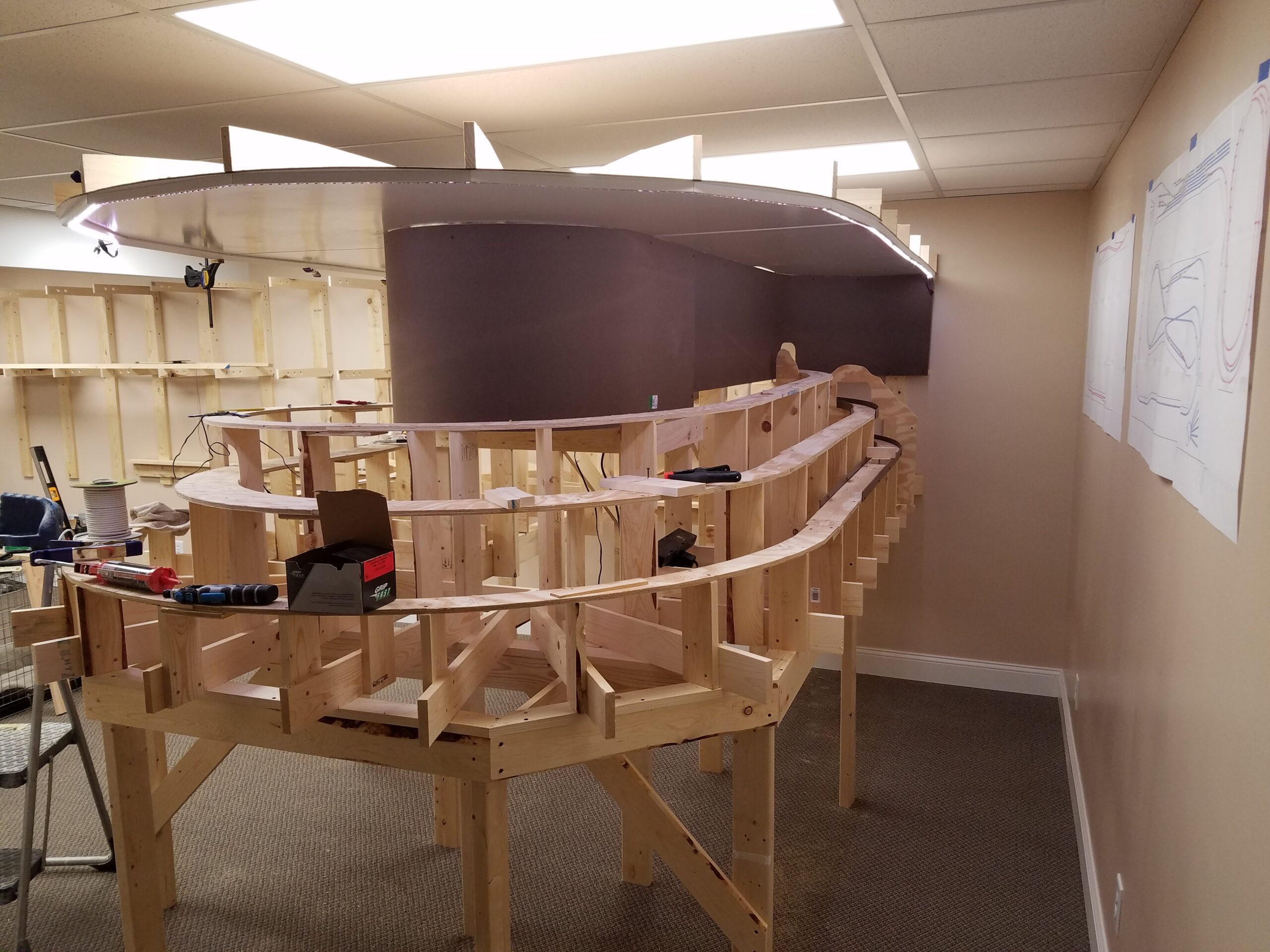I took a pause in laying sub-roadbed for the WVR to begin work on the valance for the mountain “helix” this week. I wanted to get the upper portion of this area under way while I can easily get to it. I used white finish hardboard paneling for the top surface, it has a nice shine which should help with reflecting light downward. I will also use this as a facia around the top with the white surface inward. I’ll drop it down 4 inches or so to hide the lighting and the framework above. I will eventually paint the outside surface of the hardboard.
I’ve also started adding the hardboard for the backdrop. That is an 18 inch radius at the back wall and 15 inch around the front.

I glued some PVC angled trim around the perimeter of the white hardboard and stuck two LED strip lights on the inward angled surface using the self stick adhesive that comes on the strip. One strip is bright white and the second is RGB. This allows for some color variation in the lighting.
I used Amazon to invest in a power supply ($20), a DMX 512 shield ($27) for an Arduino microprocessor that I had around, some LED strip lights ($11-12 ea.) and a DMX receiver ($19). 12V power goes from the power supply on the left to the DMX receiver on the right. The Arduino in the middle is connected to the receiver and sends it commands which control the LEDs connected to the cables exiting on the upper right. The receiver has 4 channels, one controls the white LED strip and the other three control the RGB LED strip. Each channel is pulse width modulated so the LEDs brightness can be controlled with a number from 0 to 255. I temporarily placed them behind the backdrop and connected things up. It actually works!

I wrote a simple sketch for the Arduino to fade from white to blue to red and back to white just to test it out. Here is a link to a You Tube video. I plan to create some optional lighting scenarios in the future including placing an RGB strip against the backdrop for up-lighting behind the scenery to attempt some sunrise-sunset effects. Side note: I would not have believed that you could make white light with red, green, and blue LEDs but mixing them equally actually produces white light!
There are 512 available channels in this system and I plan to use this system to control building lighting as well. Multiple receivers can be daisy chained with the special DMX cables. Not sure the little Arduino is up to the task, but we’ll give it a shot.









